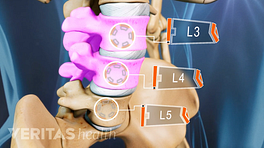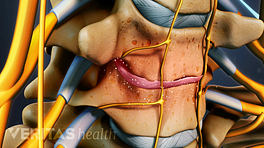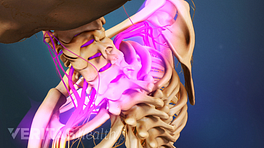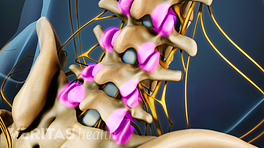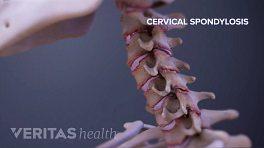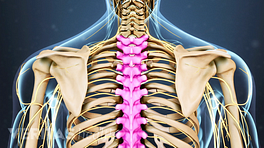Spondylosis is an umbrella term used to describe pain from degenerative conditions of the spine.
Most spondylosis symptoms result from spinal osteoarthritis, but there may be other causes as well.
Spinal osteoarthritis primarily affects the facet joints, which are paired joints on the back of each vertebral level.
As facet joint cartilage breaks down, bones in the joint grind against one another, causing friction and loss of mobility. This friction can lead to the development of osteophytes, or bone spurs, which can cause pain if they impinge upon surrounding spinal nerves, muscles, or ligaments.
Facet joint problems can lead to spondylolisthesis in the lower back, in which a vertebra slides forward over the one beneath.
This slippage can result in nerve root compression of the sciatic nerve, and pain down the back and into the buttocks and leg, often called sciatica.
Spondylosis may also describe pain caused by spinal stenosis, in which a spinal nerve root becomes compressed as it passes through the foramina, an opening in the side of each vertebra.
This nerve compression can be caused by a bone spur that encroaches upon the foraminal area.
Spondylosis may also refer to degenerative changes in the disc called degenerative disc disease, in which spinal discs begin to thin, lose moisture, and break down.
Pain from degenerative disc disease can originate in the disc itself, or come from changes in the biomechanics of the spine.
It is important to understand that spondylosis is not a medical diagnosis; it is a term that describes symptoms related to degenerative changes in the spine.
In This Article:
- Spondylosis: What It Actually Means
- Answers to Common Spondylosis Questions
- Spondylosis Video

